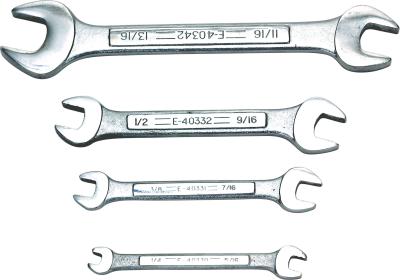
Japanese automaker Mitsubishi launched its Galant model in 1969. The earliest Galant was a compact sedan with a 1.3-liter four-cylinder engine. By 2010--nine generations of Galants later--the Galant had grown to a midsize sedan with a 2.4-liter four-cylinder engine standard. As the marque approached its 40th anniversary, Mitsubishi had sold more than 5 million Galants, and the 2.4-liter engine, introduced in 1992 on the 7th generation of the Galant, had become a mainstay of the Galant fleet. The 2.4-liter's timing belt needs replacement every 60,000 miles, the manufacturer says. It's a job you can do yourself. Purchase a timing belt at any auto parts store or at a Mitsubishi dealer. It takes approximately 4-1/2 hours to replace the timing belt on the Galant. You'll need no special tools to complete this job.
Disconnect the battery ground cable using an appropriate-size wrench. Set the ground cable aside, ensuring that it does not touch metal. Raise the Galant with a jack and support it on jack stands. Place the block of wood on the jack head, then raise the jack under then engine so the engine is supported by the jack and protected by the block of wood.
Remove the engine splash guard underneath the engine, using the appropriate-size socket. Remove the engine mount bracket, using the appropriate wrench or socket. Using a wrench, loosen the accessory belt tensioner, then remove the accessory belt. Remove the tensioner and its bracket, using the appropriate socket. Remove the water pump pulley and the crankshaft pulleys.
Remove the power steering pump hose and air conditioning hose brackets. Remove the power steering pump pulley, using the pulley remover. Remove the upper and lower timing belt covers, using the appropriate-size sockets.
Turn the crank clockwise, using the appropriate-size socket, until the timing marks on the crankshaft, the camshaft and the oil pump sprocket are aligned. If the timing marks do not line up the first time around, the engine is 180 degrees out and needs to be turned one more full revolution of the crankshaft pulley.
Loosen the timing belt tensioner pulley, using the appropriate socket. Push the tensioner toward the water pump, then tighten the bolt just enough to hold the tensioner in place. Remove the timing belt.
Check the timing marks to see if they are still aligned. Check the oil pump sprocket by removing the plug on the side of the block and inserting a screwdriver into the hole. If the screwdriver goes in 2.4 inches from the cylinder block, the oil pump sprocket is lined up. If the screwdriver goes in only 1 inch, turn the oil pump shaft until the screwdriver goes in 2.4 inches.
Install the timing belt, starting at the crankshaft sprocket and working your way counterclockwise around the pulleys, keeping tension on the belt on the side away from the tensioner. Loosen the tensioner bolt, allowing the tensioner to put tension on the belt.
Turn the crankshaft, using the appropriate socket, clockwise until the camshaft sprocket moves two teeth. Pull the timing belt toward the tensioner, making sure the belt’s teeth are set firmly into the camshaft sprocket’s teeth. Tighten the tensioner bolt to 35 foot-pounds of torque. Tighten the tensioner nut to 35 foot-pounds of torque.
Press down on the timing belt. Measure the amount the timing belt moves--it should be .55 inches when measured from the edge of the rear timing cover. If the tension is incorrect, remove and reinstall the belt.
Install all other parts in reverse order of removal. Tighten the crankshaft pulley bolts to 18 foot-pounds of torque.